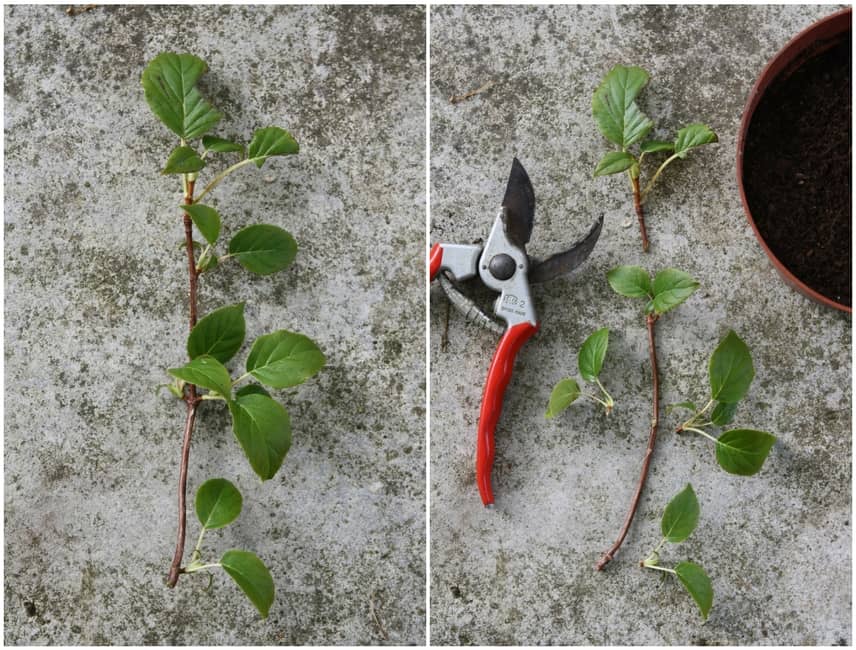
Taking cuttings from climbing hydrangea or Hydrangea petiolaris
Our tips for easy propagation!
Contents
The Climbing Hydrangea or Hydrangea petiolaris is a very vigorous plant native to Asia. From May until mid-summer, it produces delicate white blooms. To propagate it, the technique is simple and economical: take cuttings. Discover when and how to proceed to obtain beautiful cuttings!
→ Also find all our climbing hydrangeas (Hydrangea petiolaris, Hydrangea seemanii and Schizophragma sp.) in our online nursery.
When to take cuttings from Hydrangea petiolaris?
The best time to take cuttings from climbing hydrangeas is in late summer, during August or September, when the young shoots begin to harden off, meaning they become less tender and more woody.
Equipment needed
- Sharp and disinfected secateurs for clean cuts and to prevent diseases
- Pots or containers
- Light and well-draining compost: mix of compost + sand or perlite or special cutting and sowing compost
- Rooting hormone to encourage root development (optional)
- Spray bottle or watering can with fine rose
- Mini greenhouse or clear plastic bag to maintain humidity and speed up recovery
- Small stakes or sticks to prevent the plastic bag from touching the cuttings
How to Take Cuttings from Climbing Hydrangea?
Taking cuttings involves just a few simple steps:
- Prepare a pot by filling it with potting compost mixed with sand.
- Using secateurs, take 15 cm long cuttings from the tips of this year’s growth that haven’t yet flowered but are starting to harden slightly. Taking several cuttings will increase your chances of success.
- Trim the top of the cutting,
- Remove the lower leaves, keeping only a few leaves at the top.

Choose a stem that is starting to harden / trim the top and remove lower leaves
- Dip the base of the cutting in a little rooting hormone to encourage root growth, then plant them in the substrate, spacing them about 10 cm apart.
- Water regularly, but avoid overwatering.
- To maximise success, place the cuttings in a mini greenhouse or cover them with a clear plastic bag supported by stakes, creating a greenhouse effect that retains warmth and humidity, promoting rooting.
- The cuttings will thrive outdoors in shade until winter, when they should be moved to a frost-free spot, ideally in a cold frame.
- Climbing hydrangea cuttings usually begin to root within 4 to 6 weeks, provided they are kept consistently moist and in a shaded location.

Your cuttings are ready—now all that’s left is to wait!
Planting your young cutting in the garden
From the following spring, you can plant your Hydrangea petiolaris directly in the ground. Position it in shade – this is a hydrangea that cannot tolerate full sun! It will thrive in rich, moist and deep soil, but not overly acidic.
It clings to walls by itself thanks to its aerial rootlets, so it doesn’t need additional trellising to grip onto.
We recommend adding organic matter (such as well-rotted manure or compost), which you should mix into the planting soil. Remember to water thoroughly after planting.

Climbing hydrangea, aerial rootlets

All you need to know about cuttings
Discover our advice sheet: “Plant Propagation: Everything You Need to Know About Different Techniques and Our Tips for Successful Cuttings”
- Subscribe!
- Contents

































